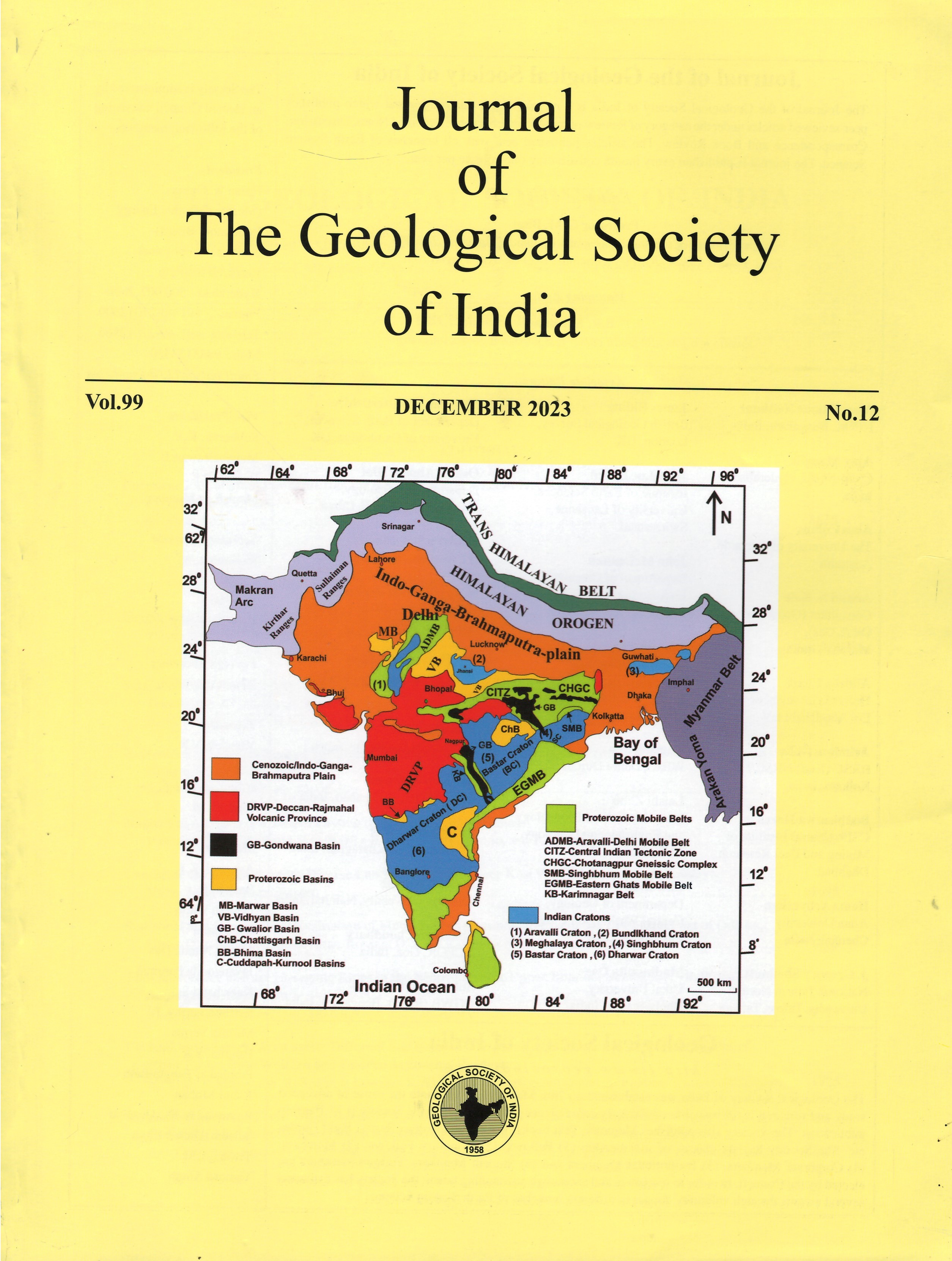Evaluation of Spatio-temporal Variability of a Flood Using the Hydrological Process of Flood Frequency in Ghagra River Basin, India
DOI:
https://doi.org/10.1007/s12594-023-2523-6Keywords:
No KeywordsAbstract
The present research study aims to analyze flood frequency to relate flood magnitudes with corresponding return periods. These estimates are crucial for the development of flood-preventive hydrological infrastructures and flood plain zoning, etc. Basin-wide high intensity of rainfall and high discharge from the upper riparian region during monsoon months creates flooding in the middle and lower reaches of the Ghagra River basin. Therefore, the flood estimates for three gauging sites situated on the mainstream of the Ghagra River viz., Elginbridge, Ayodhya, and Turtipar, have been comprehended using the Gumbel distribution (Extreme Value Type I) method and the Log-Pearson Type III distribution method. Flood estimates are calculated for 1.01, 1.05, 1.11, 1.25, 2, 5, 10, 20, 50, 100, 200, and 500 years return periods considering flood time series of 50 years to reduce estimation uncertainty. The findings of flood frequency analysis (FFA) revealed that the probability of occurrence of the flood is more than 80% at all three sites because Ghagra River can carry around 7800 to 9000 m3/s of water discharge without posing a high risk of levee break. The upper and lower limits of discharge carrying capacity depend on the river’s desiltation process. Hence, the flood occurs almost every year in the basin; its only variation is its severity. The rainfall-runoff relationship is estimated by integrating a simple linear model and for rainfall trend analysis Mann-Kendall is applied. Linear regression analysis-based rainfall-runoff relationship outcomes revealed a significant relationship with a positive correlation coefficient i.e., 0.2722 for Elginbridge, 0.39624 for Ayodhya, and 0.4844 for Turtipar gauging site in the monsoon season but other factors like a high amount of water discharge from dams in upper riparian regions, etc. are also responsible for flooding in the middle and lower reaches. The Mann-Kendall trend analysis shows a decrease in annual average rainfall and rainfall in the monsoon season. Discharge variability indicates the direct relationship between flood fury and changes in climatic patterns in recent decades. This paper identifies that future research is needed to better inform the policy planners who strive to design sustainable infrastructure.

 Rahul Verma
Rahul Verma 






